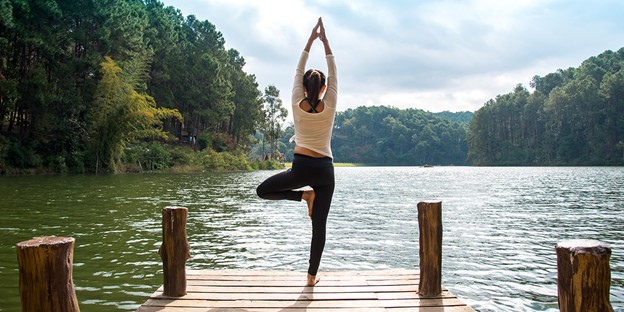
In today’s fast-paced world, achieving a balanced lifestyle is essential for overall well-being. Many people struggle to juggle work, family, social commitments, and personal interests, often leading to stress and burnout. However, with intentional strategies, you can create a harmonious life that promotes physical, mental, and emotional health. Here are some key steps to help you develop a balanced lifestyle.
1. Assess Your Current Lifestyle
Before you can create a balanced lifestyle, it’s important to evaluate where you currently stand. Take time to reflect on your daily habits and routines. Consider the following questions:
· How many hours do you spend working versus relaxing?
· Are you prioritizing your physical health?
· Do you allocate time for hobbies and social interactions?
Journaling your daily activities can provide clarity on areas that need adjustment. This assessment serves as the foundation for your journey toward a balanced lifestyle.
2. Prioritize Self-Care
Self-care is a crucial aspect of a balanced lifestyle. It’s easy to neglect your own needs when you’re busy with responsibilities. Prioritizing self-care involves dedicating time to activities that rejuvenate you. This can include:
· Exercise: Aim for at least 30 minutes of physical activity most days. Whether it’s jogging, yoga, or dancing, find something you enjoy.
· Nutrition: A balanced diet fuels your body. Focus on whole foods, including fruits, vegetables, whole grains, and lean proteins. Meal prepping can help ensure you make healthy choices.
· Sleep: Aim for 7-9 hours of quality sleep each night. Establish a bedtime routine to promote better rest.
By making self-care a priority, you lay the groundwork for a balanced lifestyle.

3. Set Realistic Goals
Creating a balanced lifestyle involves setting achievable goals. Break your goals down into smaller, manageable steps. This could include:
· Career goals: Set specific milestones for your professional development.
· Personal goals: Identify hobbies or skills you want to pursue.
· Health goals: Focus on realistic fitness targets, such as walking a certain number of steps daily.
By setting realistic goals, you can avoid feeling overwhelmed and create a sense of accomplishment, both of which contribute to a balanced lifestyle.
4. Establish Boundaries
In our connected world, it’s easy to let work invade personal time. Establishing boundaries is vital for maintaining a balanced lifestyle. Consider the following strategies:
· Designate Work Hours: Set specific times for work and stick to them. Avoid checking emails or taking calls outside these hours.
· Create a Personal Space: If you work from home, have a dedicated workspace. This helps you mentally separate work from personal life.
· Learn to Say No: It’s okay to decline invitations or requests that overwhelm you. Prioritize what truly matters to maintain balance.
Establishing boundaries allows you to enjoy personal time without the stress of work looming over you.
5. Incorporate Mindfulness Practices
Mindfulness is an effective tool for cultivating a balanced lifestyle. Engaging in mindfulness practices can help reduce stress and improve focus. Consider these techniques:
· Meditation: Spend a few minutes each day in meditation. This can help center your thoughts and promote a sense of calm.
· Deep Breathing: Practice deep breathing exercises during stressful moments. This simple technique can help ground you and bring you back to the present.
· Gratitude Journaling: Write down things you’re grateful for each day. This practice shifts your focus from stressors to positive aspects of life.
Incorporating mindfulness into your routine can enhance your emotional well-being, a crucial element of a balanced lifestyle.
6. Foster Meaningful Relationships
Strong relationships contribute significantly to a balanced lifestyle. Surround yourself with supportive friends and family who encourage you to thrive. To strengthen these connections:
· Schedule Regular Check-Ins: Make time for friends and family, whether through phone calls, video chats, or in-person meetups.
· Join Groups: Participate in clubs or activities that interest you. This can help you meet new people and expand your social circle.
· Be Present: When spending time with loved ones, put away distractions. Focus on quality interactions to deepen your connections.
Nurturing meaningful relationships enhances your emotional health and adds joy to your balanced lifestyle.

7. Stay Flexible
Creating a balanced lifestyle is an ongoing process, and flexibility is key. Life is unpredictable, and your plans may need adjustment. Embrace changes and be willing to adapt. Here are some tips:
· Revisit Goals Regularly: Life circumstances change, so periodically review your goals and adjust them as needed.
· Accept Imperfection: It’s okay if some days are more chaotic than others. Recognize that balance is not about perfection but rather about making consistent efforts.
· Practice Self-Compassion: Be kind to yourself during challenging times. Recognize that balance is a journey, not a destination.
Flexibility allows you to maintain a balanced lifestyle even when faced with unexpected challenges.
Conclusion
Creating a balanced lifestyle is a journey that requires self-reflection, intentionality, and adaptability. By prioritizing self-care, setting realistic goals, and nurturing relationships, you can cultivate a life that promotes well-being and fulfillment. Remember that balance looks different for everyone, so find what works best for you and embrace the journey.










